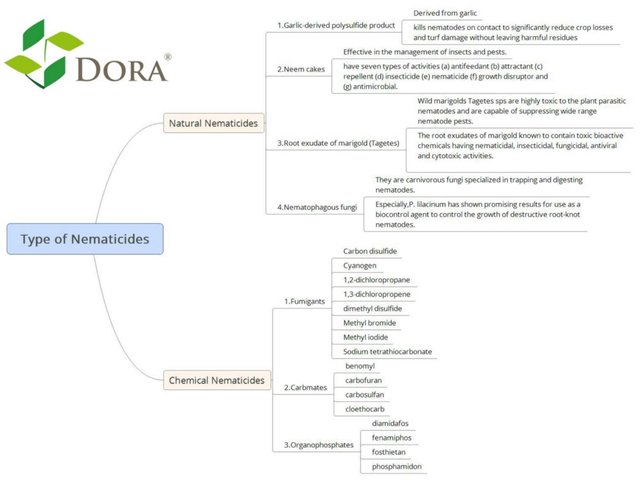
A nematicide is a type of chemical pesticide used to kill plant-parasitic nematodes. Nematicides have tended to be broad-spectrum toxicants possessing high volatility or other properties promoting migration through the soil. Below is the classification of nematicides.
Natural Nematicides
1.Garlic-derived polysulfide product
It derived from garlic, kills nematodes on contact to significantly reduce crop losses and turf damage without leaving harmful residues.
2.Neem cakes
Effective in the management of insects and pests.It have seven types of activities (1) antifeedant (2) attractant (3) repellent (4) insecticide (5) nematicide (6) growth disruptor and (7) antimicrobial.
3.Root exudate of marigold (Tagetes)
Wild marigolds Tagetes sps are highly toxic to the plant parasitic nematodes and are capable of suppressing wide range nematode pests.The root exudates of marigold known to contain toxic bioactive chemicals having nematicidal, insecticidal, fungicidal, antiviral and cytotoxic activities.
4.Nematophagous fungi
Nematophagous fungus are carnivorous fungi specialized in trapping and digesting nematodes.Especially, P. lilacinum has shown promising results for use as a biocontrol agent to control the growth of destructive root-knot nematodes.
Chemical Nematicides
1.Fumigants
Includes Carbon disulfide, Cyanogen, 1,2-dichloropropane, 1,3-dichloropropene, dimethyl disulfide, Methyl bromide, Methyl iodide, Sodium tetrathiocarbonate…
2.Carbmates
Includes carbofuran, carbosulfan, cloethocarb…
3.Organophosphates
Includes diamidafos, fenamiphos, fosthietan, phosphamidon…
